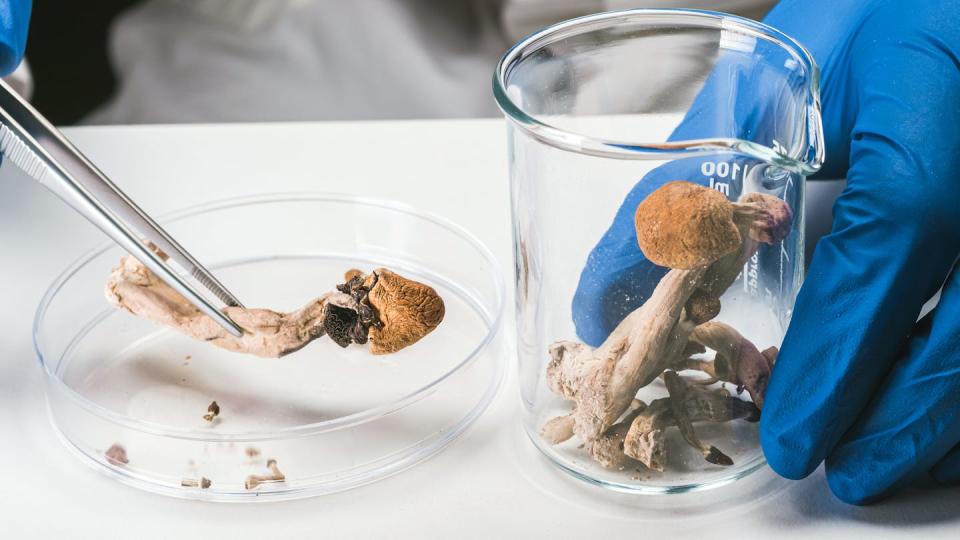Over the past decades, psychedelics have been widely reported as dangerous and illegal drugs. But a recent surge in academic research into their use to treat psychiatric conditions is prompting a recent shift in public opinion.
Psychedelic drugs are psychotropic drugs: substances that affect your state of mind. Other types of psychotropics include antidepressants and anti-anxiety medications. Psychedelics and other forms of hallucinations, however, are unique in their ability to temporarily induce intense hallucinations, emotions and disturbances in self-awareness.
Researchers looking into the therapeutic potential of these effects have found that psychedelics can significantly reduce symptoms of depression and anxiety, PTSD, substance abuse and other psychiatric conditions. The intense experiences, or “trips,” induced by psychedelics are thought to create a temporary window of cognitive flexibility that allows patients to access inaccessible parts of their psyche and create better coping skills and thought patterns.
However, it is not clear exactly how psychedelics produce these effects. So as psychiatry and machine learning researchers, we were interested in finding out how these drugs affect the brain. With artificial intelligence, we have been able to map people’s subjective experiences while using psychedelics to specific regions of the brain, down to the molecular level.

Mapping ‘trips’ in the brain
Each psychedelic works differently in the body, and each of the subjective experiences these drugs create have different therapeutic effects. Experiences of a mystical nature, or feelings of unity and oneness with the world, for example, are associated with reductions in depression and anxiety. Knowing how each psychedelic produces these specific effects in the body can help clinicians optimize their therapeutic use.
To better understand how these subjective effects are manifested in the brain, we analyzed more than 6,000 written testimonies of hallucinatory experiences from the Erowid Center, an organization that collects and provides information about psychoactive substances. We converted these references to a model called bag of words, which breaks down a given text into individual words and counts how many times each word appears. We then paired the most commonly used words linked to each psychedelic with receptors in the brain known to bind to each drug. After using an algorithm to extract the most common subjective experiences associated with these word-receptor pairs, we mapped these experiences onto different brain regions by matching them to the types of receptors present in each area.
We found both new connections and patterns that confirm what is known in the research literature. For example, changes in sensory perception have been linked to a serotonin receptor in the brain’s visual cortex, which binds to a molecule that helps regulate mood and memory. Feelings of transcendence were linked to dopamine and opioid receptors in the reward network, a collection of brain regions involved in managing sensory and emotional input. Auditory hallucinations were associated with several receptors scattered throughout the auditory cortex.
Our results are consistent with the initial hypothesis that psychedelics temporarily reduce top-down executive function, or cognitive processes related to inhibition, attention and memory, among others, while at the same time increasing brain regions that associated with sensory experience.
Why is it important
The US is facing a deep mental health crisis that has been exacerbated by the COVID-19 pandemic. But there have been no truly new psychiatric drug treatments since Prozac and other selective serotonin reuptake inhibitors, the most common type of antidepressant, in the 1980s.
Our study shows that the varied and wildly subjective psychedelic experiences can be mapped to specific regions in the brain. These insights may lead to new ways to combine existing or yet-to-be-discovered compounds to produce desired treatment effects for a range of psychiatric conditions.
Psychiatrist Stanislav Grof famously suggested, “Psychedelics, used responsibly and with due care, are to psychiatry what the microscope is to the study of biology and medicine or the telescope is to astronomy.” As psychedelics and other hallucinogens become more commonly used clinically and culturally, we believe that further research will provide the biological basis of the experiences they produce and help realize their potential.
This article is republished from The Conversation, a non-profit, independent news organization that brings you reliable facts and analysis to help you make sense of our complex world. It was written by: Galen Ballentine, SUNY Downstate University of Health Sciences and Sam Friedman, Harvard University
Read more:
Sam Friedman receives funding from IBM and Bayer.
Galen Ballentine does not work for, consult with, own shares in, or receive funding from any company or organization that would benefit from this article this, and has not disclosed any relevant connections beyond their academic appointment.